A Beginner's Guide to Bourbon
Photos by Raquel Reyes.
When it comes to the holiday season, there is undoubtedly a culinary theme that comes to mind — sparkling drinks, decadent desserts, rich, comforting family favorites. In the celebratory world, for those who partake, the topic of cocktails undoubtedly comes up: magical elixirs that may seem out of the ordinary at other times of year but would be nothing less than expected in the world of holidays and gatherings. One of the most revered liquids, whiskey exists particularly in these circles, be it at the base of a cocktail or sipped slowly by a fire. Bourbon, for those in the know, is an especially beloved distillation of the classic spirit, and though it shouldn’t be ignored throughout the rest of the year, also a steadfast favorite in the holiday season. Born in the Southern United States, Bourbon lives there, as do our resident Bourbon drinkers Creative Director Raquel Reyes and Contributor Annie Jo Baker. Here, they share their histories with the liquid and how they came to love it, along with a few facts and their favorite recommendations.*
❅
Annie Jo
I know some people are whiskey fans from first sip, but I was not. I tried multiple times to like it and just couldn’t, and, while I knew that I didn’t have to learn to like anything, least of all alcohol, I decided to. It was like a challenge. Also, I live in Kentucky and bourbon whiskey is our state’s signature spirit so I felt obligated to give it a proper go.
I’d had and enjoyed Old Fashioneds, which in Kentucky are usually made with bourbon rather than the traditional rye, but whiskey by itself has a charred flavor that can be an acquired taste when not balanced out by bitters and citrus. I acquired this taste by getting myself a bottle (of a brand I now consider undrinkable) and then sipping very small amounts at a time over the course of a couple months. Which is oddly rational and methodical for something as hedonistic as learning to drink whiskey.
Bourbon is a very specific kind of American whiskey, with a strict set of legal requirements in order to be labeled as bourbon in the US. Otherwise, it’s just American whiskey. Its “mash bill” (or list of what grains are fermented), for instance, must be mostly corn, typically with added rye and malt barley, or sometimes wheat. Other grains are allowed, but are fairly rare. A typical bourbon is smooth, round, and warm, and almost sweet from all the corn, but “high rye” bourbons, with a rye percentage typically defined as above 20%, have their own enthusiasts. Higher rye percentages, as fans of rye whiskey know, give a sharper, spicier flavor, that in bourbons is balanced out by corn. After fermentation, bourbon is typically distilled only twice—subsequent distillations will create a smoother taste, but also strip “character” from the spirit (Irish whiskey, which is often distilled three times, will taste almost plain compared to Scotch or bourbon, which isn’t inherently a bad thing!). Once distilled, it will be aged in newly charred white oak barrels, yet another important specification.
If the spirit meets an additional set of legal requirements, bottlers can put “straight” whiskey on the label, and if it meets a further set of requirements for distilled spirits, they can print “bottled-in-bond”. In days of looser restrictions on what you could sell for public consumption, “straight” and “bottled-in-bond” meant you were drinking something actually safe to consume. These days, while those statements don’t define the actual quality of the whiskey, they do designate a specific method of manufacture that is preferable to some.
Bourbon is not inherently better than other whiskeys, just as straight bourbons and bottled-in-bond bourbons are not inherently better than other bourbons, but the specific legal requirements that must be met to be labeled as such create a very particular flavor that many people enjoy.
Recommendations: Like Raquel, I don’t go for particularly expensive whiskeys (or really that expensive at all) but I do insist that I have some standards.
— Heaven Hill Bottled-in-Bond. Don’t let its reputation as cheap whiskey for underaged drinkers fool you!
— Four Roses Single Barrel. Full, warm, and lightly spice-y.
— Bluff Hills. A good, traditional, inoffensive bourbon.
Raquel
I came to bourbon through cocktails, as in Savannah — like the Kentucky style of making Old Fashioneds with bourbon — the whiskey sour is also most commonly made with bourbon whiskey as opposed to a traditional rye. Certain smoky undertones can take on the characteristics of honey which pair very smoothly with the proportion of lime or lemon juice in a sour. I’ve gone into a short history of my love for the whiskey sour here before, and that opened the door to more complex flavor pairings. I like to picture myself adventurous but before that my consumption of whiskey was reserved to subpar Jack and Cokes following what I overheard other people order in bars. I didn’t really love it and finally, out for dinner one night and spotting it on a menu, ordered my first Old Fashioned. The next night, out at my favorite bar (of the time; RIP Sparetime) with friends, I spotted a signature whiskey sour on their menu and the rest is history.
Most of my favorite cocktails are bourbon based, and I find they taste all the more special when the ingredients are fresh and in season. Citrus in particular, that fresh base for sours and expats, that twist in an Old Fashioned, peaks in the winter months, and so for me that typically means having one of the lot every chance I get at this time of year. In a small town with as many talented bartenders as chefs, any variety of bourbon drink on a menu will no doubt satisfy me, and as bonus has allowed me to try not only different varieties but also to learn which I like, and the notes I like in common. Like my preference for red wine, bourbon as well carries a distinct terroir that I enjoy on the palette, along with that signature charred smoke and underlying sweetness. When it came to establishing a taste for bourbon neat, it was the challenge of finding and identifying these notes that most enthralled me.
Like Annie Jo mentioned, bourbon is a regulated spirit. In fact I believe the most regulated in the country, and historically also the first. In its early days, bourbon was sold as medicine as well as a drink, and to make easy money, less-than-noble distillers would mark any old liquid as the substance, adding artificial colors and flavors to pass it off as such, eventually making a terrible amount of people ill. The Bottled-in-Bond Act was the first of its kind, and added to bourbon its second set of more stringent regulations: no artificial ingredients, no additional flavors, aging for a minimum of four years, and in government bonded warehouses.
The toasted bite from charred barrels tasting like vanilla and fresh baked cookies; the corn, slowly turning to sugar and caramelizing; even the location of a barrel in a warehouse can affect this delicate balance, leading to the small batch and single barrel revolution. Learning that all of the flavors in a bottle happened through the pure chemical reaction of only a few ingredients and with the undying optimism only a distiller could have, I was inspired to taste it on its own.
In a very unclassy turn of events, I realized I had already been doing so for some time. As Southern tradition holds, when you order a shot, you’re more likely to be handed an ounce of bourbon than you are tequila, and I had done many, many shots. I guess I can thank those nights for something then, because in the end sipping wasn’t difficult once I had inadvertently built up that tolerance for it — though I certainly wouldn’t recommend it to anyone as a learning method. Nowadays, I love the fun of cocktails too much not to enjoy bourbon mainly in this capacity, but will always make it a point to sip at least the first glass from every new bottle that enters my home, as a christening but also a sign of reverence.
Recommendations: I have to admit that when it comes to some things in life, bourbon being one of them, I don’t go for reasonably-priced... I’m no Van Winkle of course, so it’s a possibility these are actually affordable to some, but whether or not that applies doesn't register to me much. When it comes to ingredients, I come from culinary blood, and the belief goes: if it’s good, I buy it. Local, independent, and small batch whenever possible. And as I don’t drink it every single day, or even year round (summer is my Gin season, for example), it stands as a justified part of my budget counterbalanced by less spending elsewhere. At the end of the day, buying a bottle to sip and mix drinks at home is far more reasonable than dropping $12 in a cocktail bar every time I feel like a drink.
— 13th Colony Southern Bourbon. Smooth and sweet, my favorite and produced less than a few hours from me. The distiller offers other spirits, delicious and in small batch form as well.
— Old Forester 1897 Bottled in Bond. Fruity and spicy, lends very well to all sorts of cocktails.
— Wild Turkey. A good starter bourbon and easy to find. Light and smooth, so if you’re looking for more depth, try their higher percentage rye 101 variety.
— Bib & Tucker. A small batch from Tennessee, with interesting cinnamon and leather notes balancing out the sweetness.
To Drink*
If developing a taste for it is in your interest, the key is to start slow. Breathe in its scent before taking a sip. Bourbon is meant to sit on the tongue, so let it swim around and give the flavors a chance to open. You can work in a mixer, if need be; soda, ginger ale, lemonade, or tea, and reduce the quantity as you go forward. This is also how bourbon and whiskey are taken with water, the most recommended additive to your glass. The natural lead up or follow to bourbon neat is with a splash, on the rocks, or straight up (mixed with ice and strained). A small amount of water, however you add it, opens the flavors, and a good way to start the path is to take a glass of bourbon with a glass of cold water in hand, alternating sips between the two until you don’t need the water anymore. But there is no real wrong way to enjoy bourbon, as most distillers will tell you; so long as enjoyed thoughtfully and with friends.
❅
As it is Christmas, that time of themed drinks and festivity, we’ve each shared here a favorite bourbon drink, if neat isn’t your thing just yet.
Vegan Eggnog (Vegnog?) by Annie Jo Baker
While traditional eggnog includes rum and brandy (or cognac), Southern eggnog swaps the brandy component for bourbon, and in some cases the rum too. When making something not-vegan vegan, you ask two questions: 1. What are the animal products in this food doing? and 2. Is there something plant-based that does the same thing?
The non-vegan components of eggnog are as follows:
Cream
Milk
Egg yolks, beaten
Egg whites, whipped into soft meringue
Cream is a dense, fatty liquid. Milk is a less-dense, less-fatty liquid. Egg yolks add further richness and density. A meringue is an airy foam.
So, you need a milk, and not a fat free one. One’s first instinct is likely to use nut milk, but oat milk is thicker than many nut milks and can also have a high fat content, making it a good option in this situation. If you don’t like oat milk, you can use your preferred nut milk and add some coconut milk for extra creaminess, but not too much or else the coconut flavor will be overwhelming. Replacing egg is one of the hardest things in vegan baking. For egg yolk, you can create a gelatin of flaxseed meal and water, but I found that ultimately unnecessary here. Stick with a thick milk. For the meringue, make aquafaba—foamed chickpea water.
You will need:
2 cups unsweetened non-dairy milk
3 oz. / 90 ml bourbon
¼ cup sugar plus 5 more tablespoons
1.5 cups water from cooking chickpeas
1 tsp cinnamon
1 tsp nutmeg
Cook dry chickpeas. When they’re almost done, start assembling the rest of the ‘nog.
To 2 cups of slightly warmed milk, add 3 oz of bourbon, 1 tsp cinnamon, 1 tsp nutmeg, and ¼ cup of sugar. Mix to dissolve sugar.
When the chickpeas are done, drain off the water and save it. (Do whatever you want with the chickpeas.) The water will be brown, but don’t be alarmed. Measure out 1.5 cups into a metal bowl, and gradually add 5 tbsp of sugar while beating. While the aquafaba foams more easily than egg whites, it doesn’t want to form a real, solid meringue, so as the peaks formed, I scraped them off and added them to the rest of the ‘nog, and kept beating the remaining water, as I wasn’t actually making a meringue.
Fold the foamed aquafaba into the ‘nog. It will, astonishingly, look and feel like regular eggnog, and even though it will taste like whatever milk you used in place of cow’s milk, the aquafaba is, like egg white meringue, almost completely flavorless.
Warm Apple Cider Toddy by Raquel Reyes
This is a simple enough drink, popular at this time of year for its ability to magically disappear a cold or lull it’s consumer to sleep. While the hot toddy is traditionally made with black tea, this became a sort of reverse to the fancy I found in early autumn of accompanying a hard cider with a splash of bourbon.
You will need:
6-8 oz. / 180-240 ml hot apple cider (fresh is best but if needed you can also use the powdered variety mixed with simmering water)
1 tbsp. honey (or maple syrup for a vegan alternative)
2 oz. / 60 ml bourbon
1 oz. / 30 ml fresh squeezed lemon juice
Lemon slice for garnish (optional)
Prepare or warm your apple cider as necessary.
Stir in honey or syrup to fully dissolve, followed by bourbon and lemon juice.
Garnish with lemon wedge and enjoy!
*Friendly reminder to drink responsibly! To steal that age old wine adage, ‘a lot of work went into that bottle, treat it with respect.’
Raquel Reyes is Creative Director at The Attic on Eighth. She enjoys styling photo shoots, dramatic hair accessories, and old fashioned cocktails.
Annie Jo Baker is 23 and lives in Kentucky. They have a myriad of interests, including science, literature, and activism.




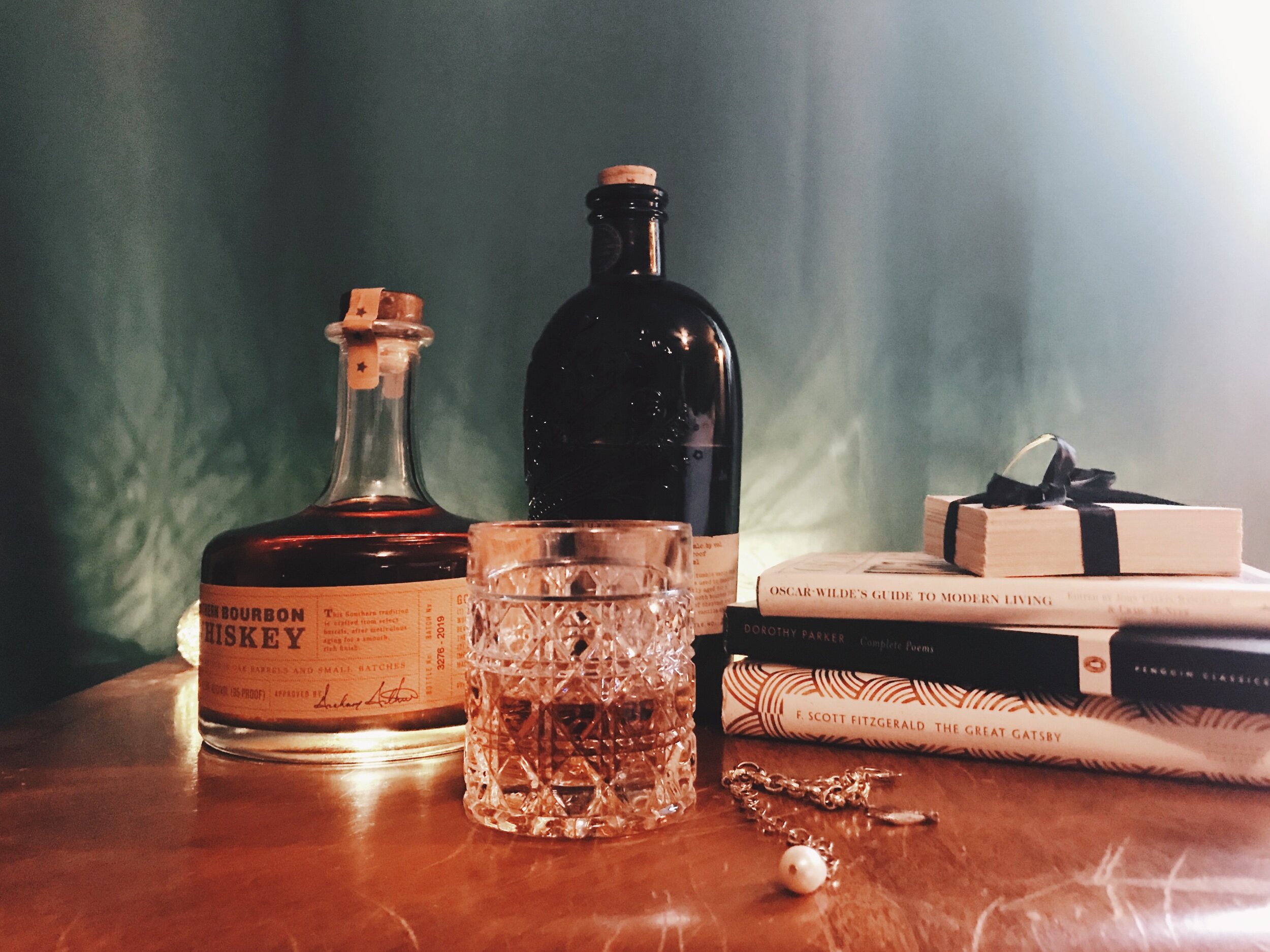
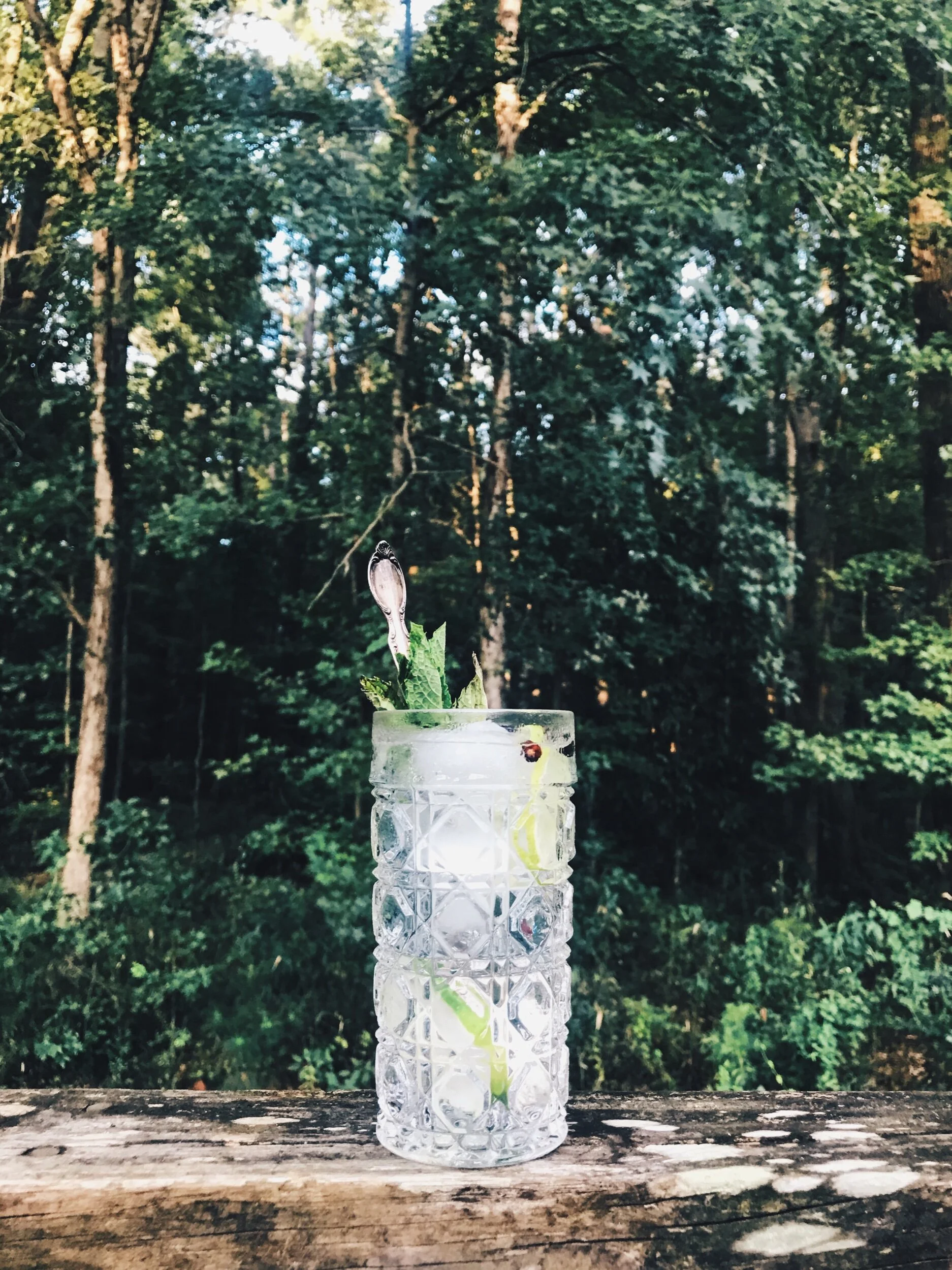


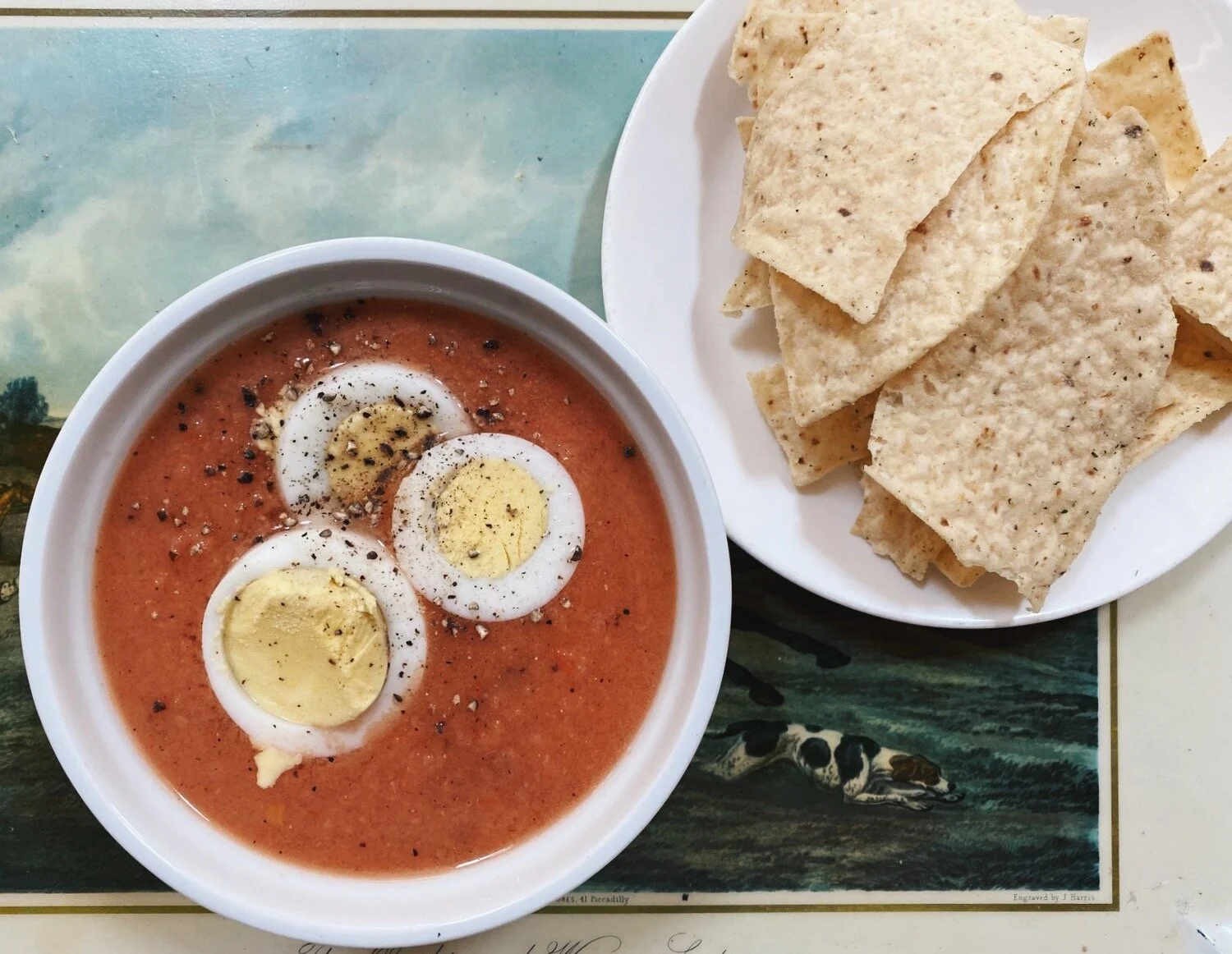
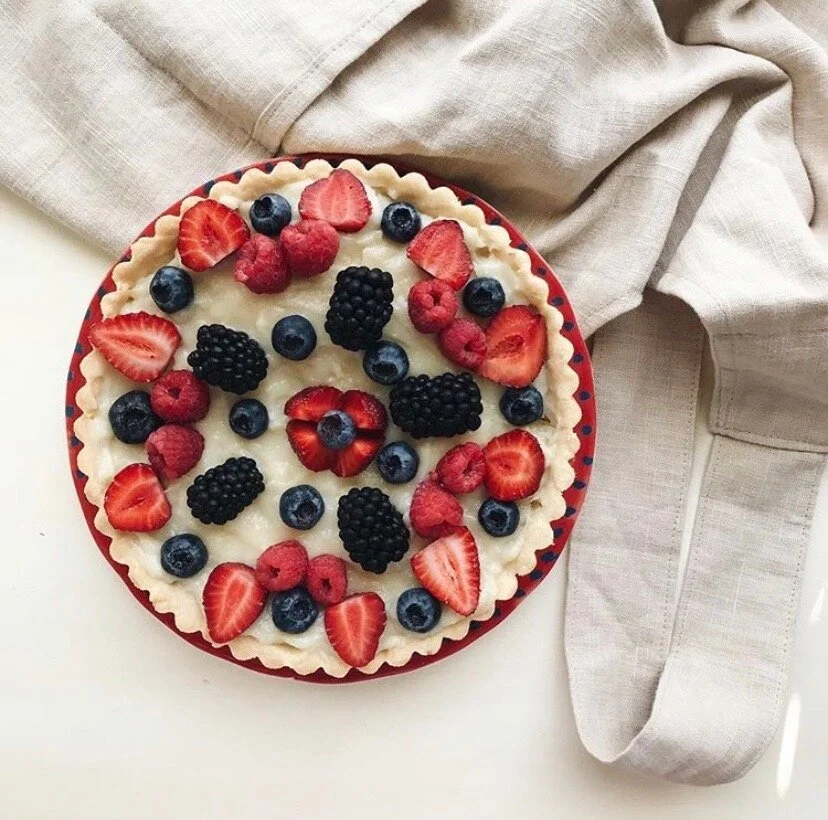

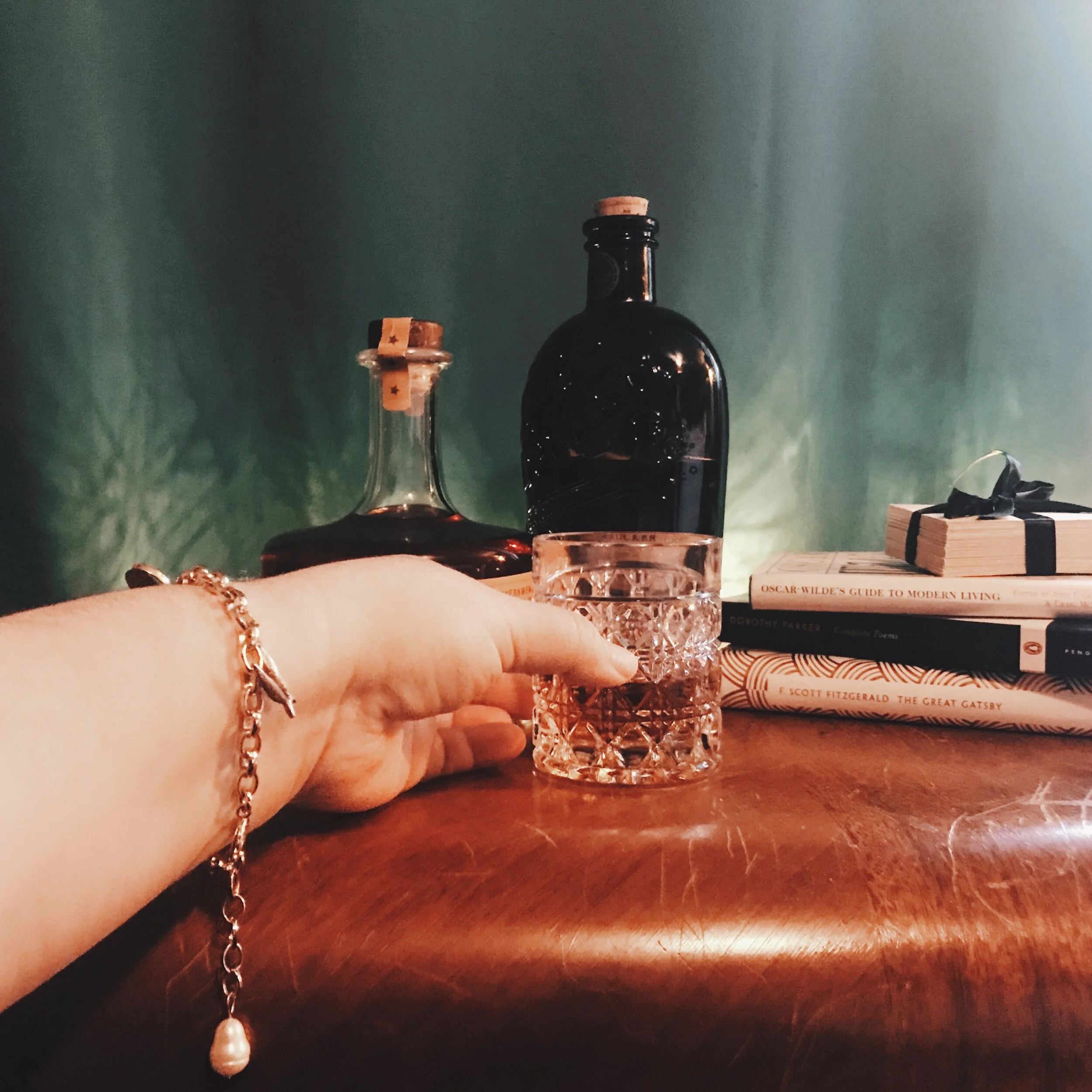
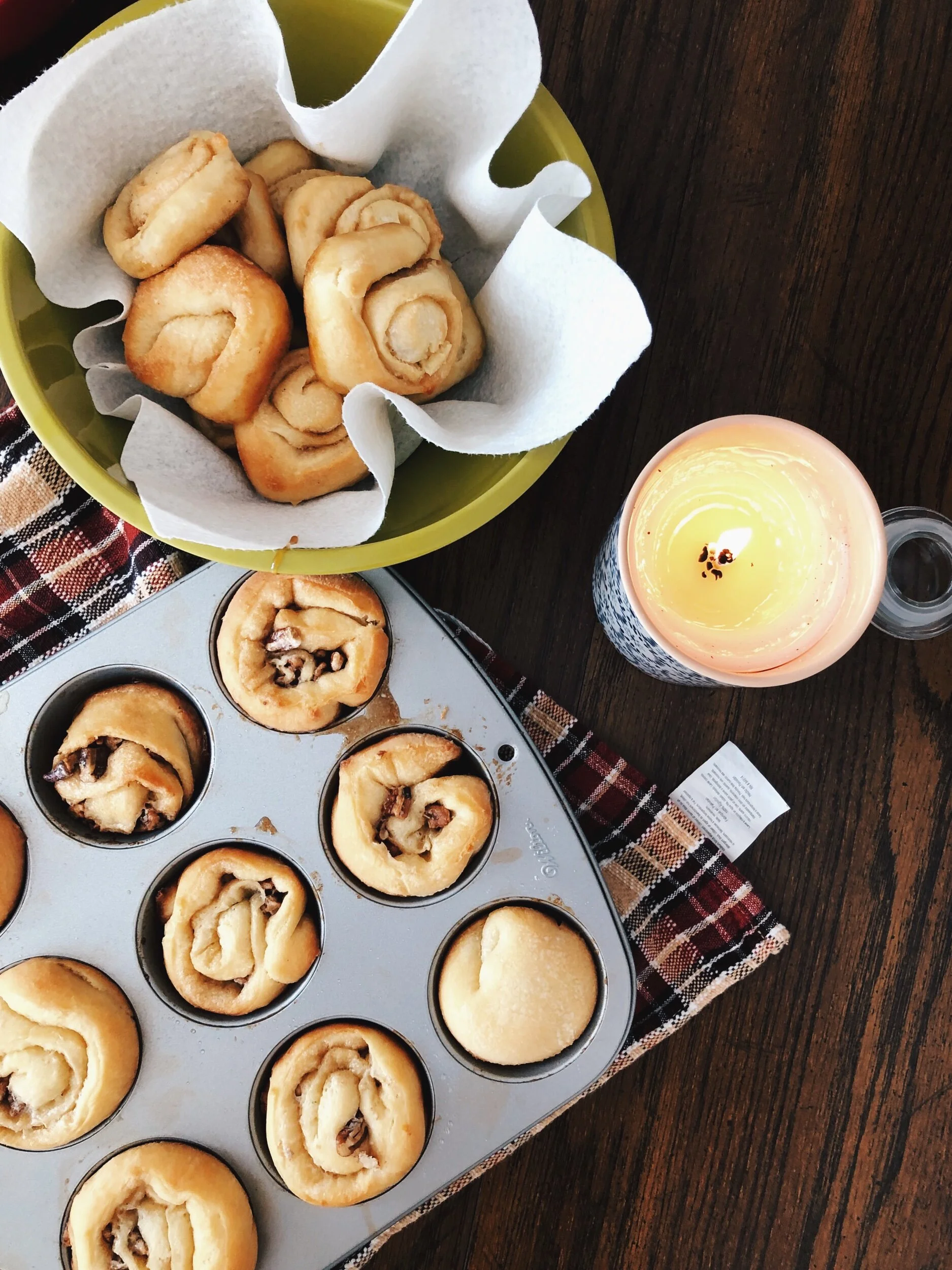
Adding to the community spirit of the holidays, founding The Attic on Eighth member Amy Richardson shares a Christmas Eve tradition (and recipe) that she started with her father.